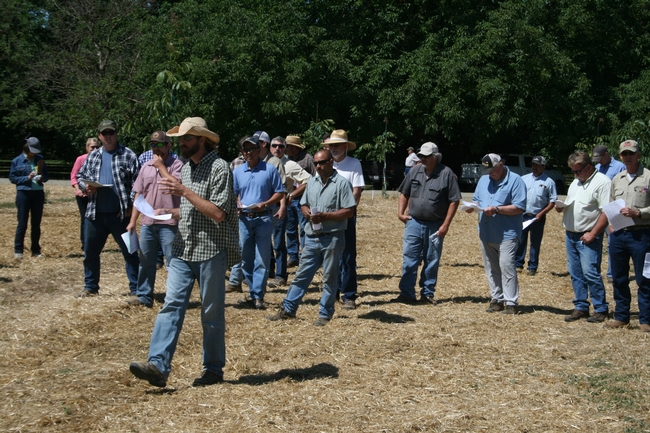Today, May 8th, marks the 100th anniversary of the signing of the Smith-Lever Act that resulted in the creation of Cooperative Extension. The UC Division of Agriculture and Natural Resources (ANR) and the three land-grant campuses in the UC system (Davis, Berkeley, and Riverside) as well as most of the county-based UCCE offices are celebrating this milestone in various ways under the banner “A Celebration of Science and Service”.
I have been involved in applied research and extension for almost 20 years during career stops at Iowa State University, University of Idaho, Oregon State University, Colorado State University, USDA-ARS, and for the past five years on campus at UC Davis. I'm very proud to be a part of the Cooperative Extension tradition of the land grant universities.
One of the most enjoyable and invigorating aspects of Cooperative Extension is the collaborations among different scientific disciplines to help solve real-world agricultural problems. This real-world is where biology, chemistry, agronomy, horticulture, economics, statistics, and other disciplines all collide; Cooperative Extension Specialists and Advisors are right in the middle of providing science and service to California and beyond.
I thought I'd share today one UC Cooperative Extension Specialist's version of “science and service”.
To start with, I have to tell you that I think I have one of the best jobs in the university. In my role as a Cooperative Extension Weed Science Specialist, I have the opportunity to be a statewide resource for weed management issues in a whole sector of California crops. Mostly, my applied research program can be grouped in the areas of weed management, herbicide efficacy and crop safety, and herbicide resistance. Some of this work is done in the fields, greenhouses, and laboratories at UC Davis; however, much of is conducted at research stations and commercial fields throughout the Central Valley.
Because the research is so applied and intended to help solve real world problems, I spend a lot of time talking to advisors, farmers and agricultural industry partners about the research and helping answer weed- or herbicide-related questions. I also provide information to media and regulatory agencies in my areas of research and expertise. I enjoy sharing what I know or results of current research in presentations. However, I think an even more important aspect of these presentations, meetings, and casual conversations is that they provide two-way communication that informs and shapes the research we do. It's amazing how many research projects are started because of a visit with an advisor or farmer in the field or at a meeting.
As a CE Specialist, I work closely with UC Farm Advisors, the crop protection industry, and other Specialists and UC Faculty. One of the benefits of being located on a UC campus is that I can magnify the impact of my program by working with graduate students, postdocs, and support scientists. Contributing to the training of the next generation of applied scientists is very rewarding to me, increases the number and depths of projects we can do, and I'm convinced that it provides both short- and long-term benefit to California's agricultural economy.
I think that, while the role of Cooperative Extension has changed over the past 100 years, we still provide a vital part of the applied science and education needed in California. I think that some of what UC Cooperative Extension does can be a bit “invisible” at times to many Californians but I know we contribute to the benefit of the state and our stakeholders. I don't think there are many better examples of science and service in action and I'm glad to be a part of Cooperative Extension at the century mark and look forward to the next chapter.
Take care,
Brad
